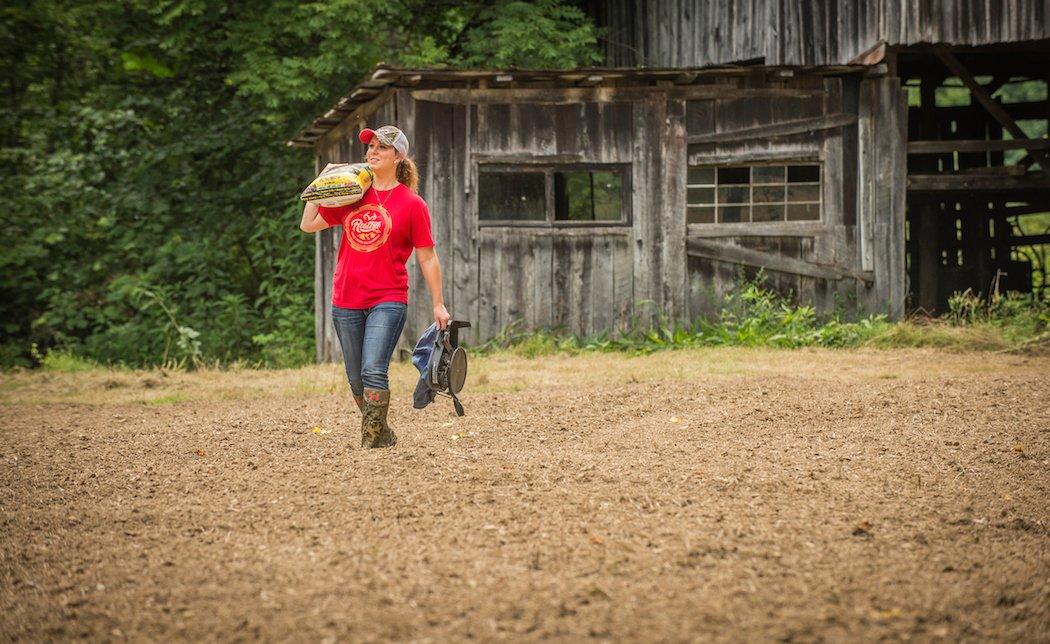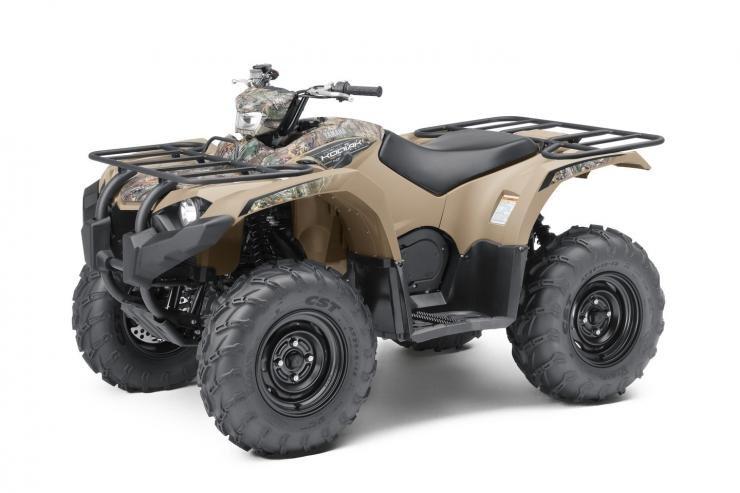Are You Someone Who Hunts on Small Tracts of Private Land?
Land ownership and land management often go hand-in-hand. It's difficult to get permission to make big changes to properties you don't own. But, for those who own land, are there certain things landowners on smaller plots of land, say 10 to 20 acres, can do?
Absolutely, said Bryan Burhans, director of land management programs for the National Wild Turkey Federation. At the NWTF, we understand that you don't have to manage thousands of acres to have great hunting.
With that in mind, here are tips that owners of smaller acreages can use to help transform their property into a wildlife wonderland. And if you are hunting for property of your own, check out all of the hunting-specific listings on RealtreeUC.com.
1. Get Professional Help
Especially on small properties, making sure that you are implementing the best projects that will help you achieve your goals is critical. To make sure you are planning the right projects, get some free help from your state wildlife agency, state forestry agency or your local Natural Resources Conservation Service office. These agencies will help you make sure you are spending your time on projects that best suit your land. Not to mention, these contacts may help you find some state or federal funding that can help you pay for some of your projects, commented Burhans.
2. Know Your Neighbors
If you haven't already done so, Burhans recommends that you get to know your neighbors a little better. The landowners around you may be wanting to enhance their hunting property and thinking the exact same things you are, and you might not even know it, said Burhans.
By doing some research and visiting your neighbors, you may just find that you're surrounded by like-minded people who want more and better wildlife on their property. This step can't be underestimated, as it can be a real morale booster as you begin your project.
3. Pool Your Resources
After that, it's just a matter of planning an informal get-together over lunch or dinner to discuss the best ways to manage parts of your land together, Burhans said.
When it comes to land management, bigger is definitely better. For instance, maybe you have 20 acres, and your neighbor has 50. Your neighbor on the other side of your property has 30 acres with some creek frontage, and all three of you have various pieces of equipment that can be used for planting food plots and improving property.
Just by reaching out to others and asking to see if they want to team up, you've turned what would have been 20 managed acres into 100. Burhans notes that the larger you can get that managed chunk, the bigger your results will be. It's better for wildlife to have one large, contiguous piece of managed land instead of several broken-up pockets, so don't be afraid to reach out to others and team up - more often than not you'll be glad you did.
4. Plant Multiple Species
You and your neighbors don't all have to be die-hard deer or turkey hunters to cooperate, either. Say for instance that you have a neighbor on one side of your land that is a devout deer hunter. According to Burhans, managing land for turkeys also provides benefits to deer.
Yamaha Introduces 2018 Kodiak 450 in Realtree Xtra
Deer and turkeys both love clover, so if you were to plant some of that particular crop, it's viewed a win-win scenario for everyone. Once you show someone that there's something in it for them and not just you, you'll find people much more willing to cooperate and help out with time, labor, equipment and more.
Burhans also stressed the importance of making sure all hunters on the property are on the same page when it comes to harvesting game.
Work with your neighboring landowners to establish a consistent harvest strategy, especially for deer, said Burhans. Managing your deer herd to achieve a balanced sex ratio and increase the age class of your bucks will mandate that you cooperate with neighboring landowners. Otherwise, as soon as you pass up that 2-year-old buck, that young buck will likely be harvested by one of your neighbors, unless you all agree to manage consistently.
5. Equipment Matters
No doubt about it, when it comes to building better food plots and managing your land, a tractor with some agricultural attachments definitely comes in handy. But for the small-time landowner, owning a tractor may be impractical or beyond their budget. Burhans recommends using whatever you have at your disposal, including all-terrain vehicles (ATVs) and implements designed for ATVs.
Today's ATVs are more comfortable, powerful, easy to use and reliable than they've ever been. They're also very versatile, and you'll find a plethora of agricultural attachments that can be towed behind them, such as mowers, tillers and sprayers. Sure, it may take multiple passes with an ATV to achieve what a large tractor could do in a single pass, but ATVs can cost thousands less.
If ATVs aren't your thing, why not consider renting a tractor for a weekend? By renting a tractor for you to use, equipment rental companies in your area can provide the tools to help you get a massive amount of work done in a small amount of time for a reasonable price. As Burhans noted, It's all about working smarter, not harder, especially when it comes to small-time land management on a budget. Some rental agencies may even deliver and then pick up the tractor from your land for a fee when you're done using it.
6. Plant the Seed
The NWTF understands that today's economic environment calls for landowners to be ever more resourceful. That's why Burhans especially recommends that you check out the NWTF's Conservation Seed Program. The program, started in 1997, provides seed such as corn, milo and wheat that can be used for conservation purposes. Millions of pounds of corn, soybeans, milo, wheat and sunflower seeds have been purchased and planted for wildlife through the program, and the cost is affordable, even for Roundup Ready corn.
The seed companies distribute usable, surplus treated seed by giving it to the NWTF. The NWTF then provides the seed to members through participating NWTF chapters further their wildlife conservation and management goals.
It's important to note that seed can only be distributed to chapters in large quantities such as half or full semi truck loads, so check with your local NWTF chapter to see how you may be able to acquire some quality seed for an excellent price. For more information, visit the Conservation Seed Program page.
7. Plant Trees
In addition to seeds, the NWTF may also be able to help you with tree seedlings for your property. Since 2000, NWTF's Operation Oak and its partners have teamed up to combat the decline of oak woodlands in eastern U.S. forests by planting seedlings on public and private lands. The seedlings are chosen for their hardiness, high growth rate and the potential to produce acorns in approximately 10 years. Like the Conservation Seed program, Operation Oak seedlings are provided through participating NWTF chapters. Private landowners across the Southeast have benefited from Operation Oak. But no matter where you live, the NWTF has a program available to help.
8. Will Work for Food
With some shared land, thrifty equipment and heavily discounted seed, finding help to perform the tilling, seed planting and other tasks that go with managing your land is the last hurdle. But you'd be surprised how much help you can round up from your friends if you do just three things: 1) keep it fun, 2) keep your volunteers well-fed and 3) limit the work to only three to four hours, max.
For example, do you have a fishing pond or lake on your property? Or maybe some trails to ride horses or ATVs? What about a place to plink at cans, or pattern a shotgun? Inviting friends to come work with you for few hours in the morning to prepare a food plot followed by a hot and hearty lunch, then some afternoon fishing or target shooting is much more appealing than simply saying, Hey, will you come help me work on my land this weekend? Burhans noted that, Again, it's all about giving people an incentive to help you. If they have one, odds are they'll do their best to help. You'll get better, more enthusiastic volunteers and your land will benefit as a result. Don't forget to return the favor by helping your buddies with their land management projects as well.
Creating a great hunting haven on a smaller property is possible, and preparation is the key. With some sweat equity, a little diplomacy and a bit of luck, you too can enjoy your own little pocket of hunting paradise without breaking the bank.
Editor's note: This article was originally published February 20, 2009.
Are you a land manager thirsty for knowledge? Check out our stories, videos and hard-hitting how-to's on food plots and land manager.
And follow us on Facebook. It's the 21st century, dude. Get with the program.








